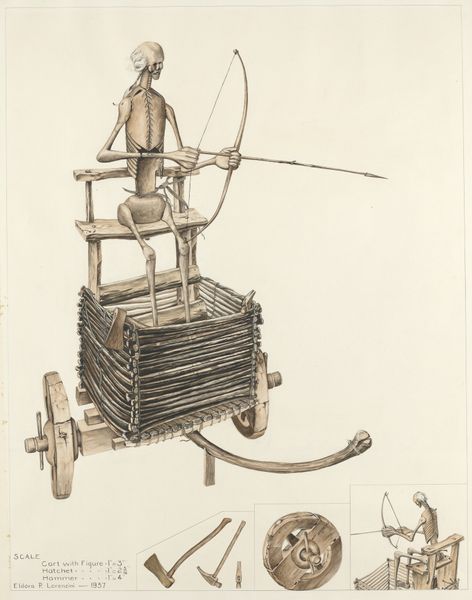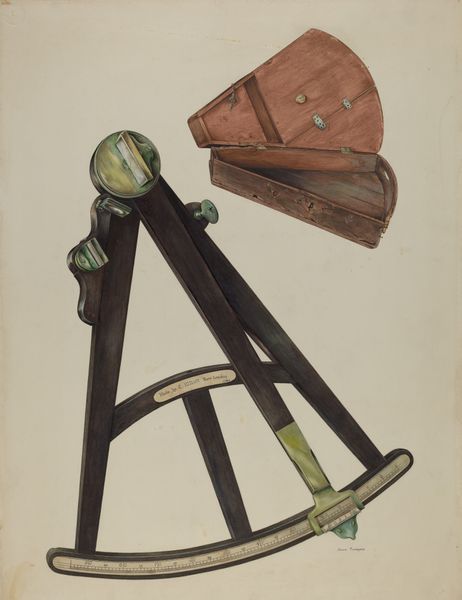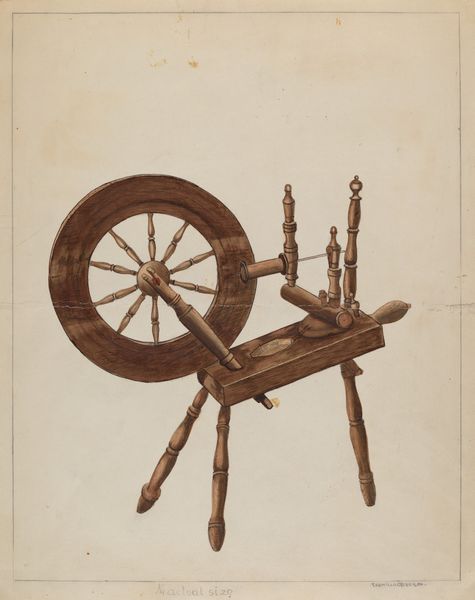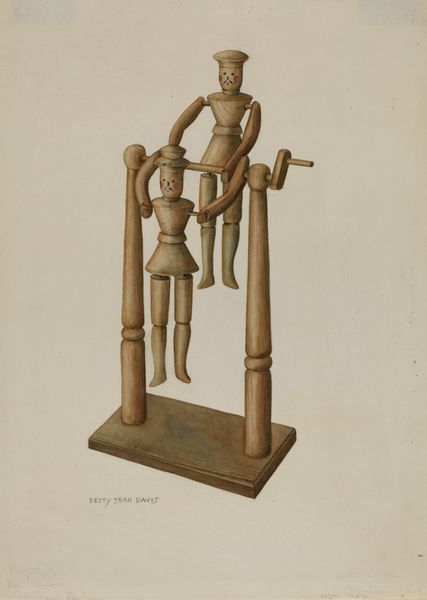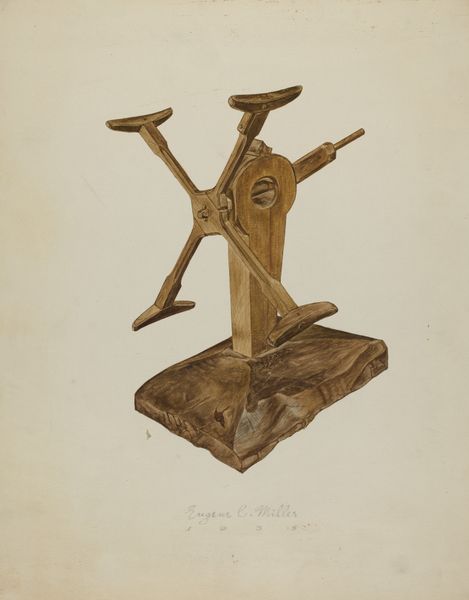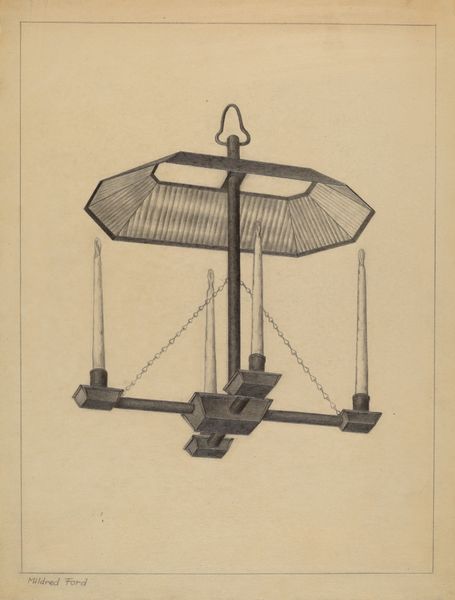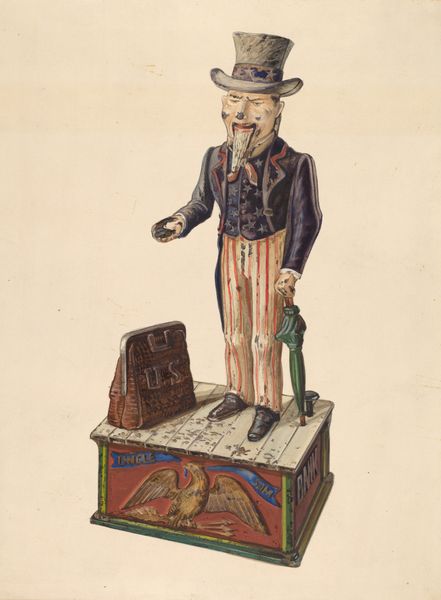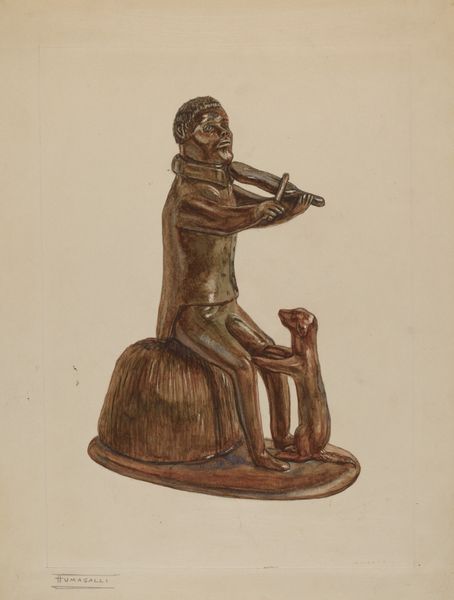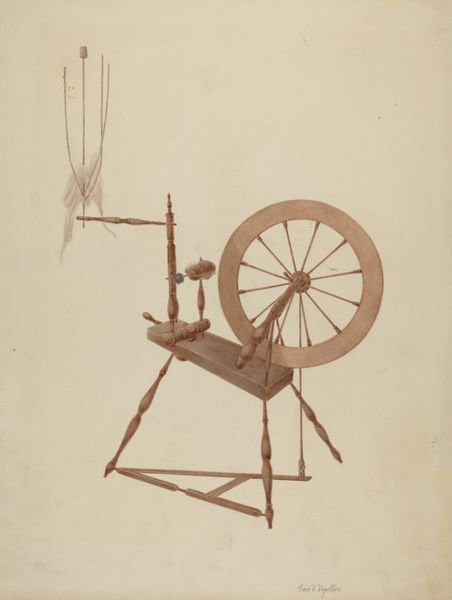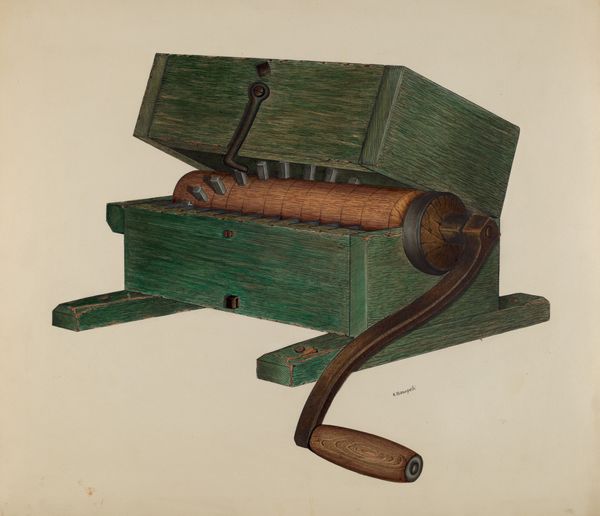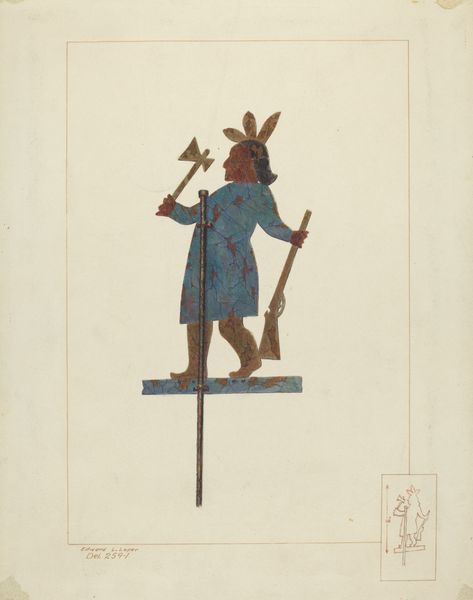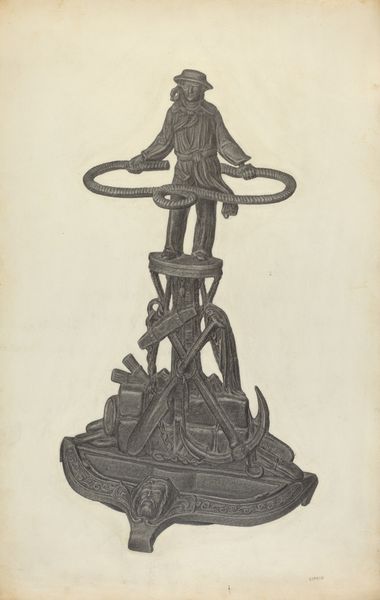
drawing, watercolor, graphite
#
drawing
#
narrative-art
#
fantasy-art
#
figuration
#
watercolor
#
pencil drawing
#
graphite
#
watercolour illustration
#
graphite
Dimensions: overall: 36.2 x 28.4 cm (14 1/4 x 11 3/16 in.) Original IAD Object: Approximately 5' high
Copyright: National Gallery of Art: CC0 1.0
Curator: Majel G. Claflin’s watercolor, graphite, and pencil drawing, “El Muerto” Death Figure and Cart, dates to around 1937. Editor: What strikes me immediately is the spareness of the composition. It's stark, almost unsettling, and all rendered in such muted tones. Curator: Absolutely. The cultural context is fascinating. Claflin was deeply engaged with the art and culture of Mexico, particularly the concept of death as portrayed in Mexican folklore and celebrations like the Day of the Dead. This work is clearly a commentary on mortality, possibly even social and political upheaval given the period. Editor: From a formal standpoint, observe how the artist uses line to define the figure and the cart. The rigid geometry of the cart sharply contrasts with the flowing lines of Death's robe. It suggests a sort of mechanical inevitability, doesn’t it? Curator: Indeed, and considering the historical context, this representation could be interpreted as a critique of industrialization and its dehumanizing effects. Death here isn't just a natural phenomenon; it's perhaps linked to social and economic structures. Editor: Yes, and the restricted palette emphasizes the subject matter. The artist limits their range to convey something essential about texture and shape while accentuating the grimness of it all. The somberness is carried by this aesthetic restraint. Curator: The bow and arrow the figure wields certainly ties into an enduring cultural trope of death, however here, that symbolism could represent a challenge to oppressive powers, aiming at structural injustices of the time, very aligned with what artists like Posada were doing. Editor: That is plausible. Thinking purely in terms of artistic execution, there is such economy in each stroke and the careful building of tone through the watercolor. Curator: Seeing it from that angle allows you to perceive the sheer power embedded within. I was looking at the artwork in terms of the culture in which the artist created the work and what its social impact was intended to achieve. Editor: Understanding the intent expands on the appreciation. It showcases a lot, and brings forward the artist's vision, allowing viewers to truly experience its gravity. Curator: Absolutely, by integrating social understanding into that vision. Editor: Precisely. Thank you for bringing that context to my attention, it reshaped the visual dynamic.
Comments
No comments
Be the first to comment and join the conversation on the ultimate creative platform.
